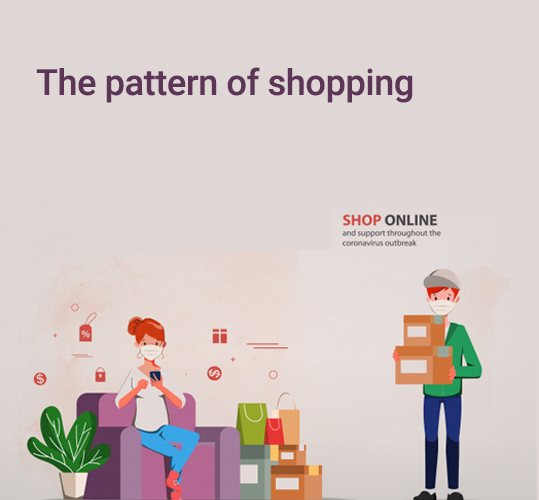With every passing year, the Indian ecommerce sellers are mastering the art of drawing shoppers to their stores. Whether you live in the North or the South, unless you have been meditating for years, you might have come across the word, Ecommerce! While this concept is still developing in many regions of India, it is already well-established in the US for decades. However, this year has contributed a lot in changing the face of shopping in India. With personal hygiene and social distancing becoming the new normal, online shopping has not only become a necessity but also a part of this new lifestyle. Although the entire nation was a standstill for the initial few months, this pandemic has positively impacted the ecommerce industry as more and more people are now willing to purchase products online. In this article, we will be discussing the ways ecommerce changed the face of shopping in India. If you are interested to know the silent yet powerful changes you have been through for shopping in India, this article is a must-read for you!
How has ecommerce impacted shopping in India?
The new-age technologies have brought remarkable changes in various fields and the retail industry is no exception. The Indian ecommerce market is growing at the rate of 51% per year which has significant impacts on the face of shopping in India. Even the rebellion businessmen who scorned at the idea of ecommerce over the brick and mortar stores are now acknowledging the benefits of selling online. Even though the current situation and many more incidents are not something to be glad about, the ecommerce retailers are benefiting the maximum. Almost every online seller including Amazon, Flipkart, and Myntra are offering discounts, sales, and many benefits of shopping online giving a neck-to-neck competition. Below are a few major changes seen in the way of shopping in India:
The pattern of shopping

With the rising spread of the coronavirus in India with death rates beating all the major countries, the fear factor in the people of India is increasing day after day. People have now considered sanitizers, masks, gloves, and other safety equipment as a part of their routine life. Although the government has raised the curfews, lockdowns, and many major restrictions, people still fear to visit a physical store to purchase even their basic day-to-day essentials. Even the people who never trusted online products are now trusting in purchasing online over offline shopping, contradictory to the previous pattern of shopping.
The addition of new categories
Staying home for almost 5 months, you might have already witnessed the addition of new categories in the retail industry of India. Every ecommerce seller, we repeat, every seller, without a doubt, has added one or more categories to their product listings. As the saying goes, where there is demand, there is a supply. And, today, all shoppers demand basic necessities, safety equipment, and groceries, online. Earlier, online shopping was primarily used for purchasing clothes, and electronics which later added food and other essentials. However, this year, the ecommerce vendors have got a chance to tap onto newer niches. Although there was a break in the supply chain due to lack of product availability, now, and even in the coming few months or more, people would like to avoid or at least minimize their exposure to the public places. This eventually means that the ecommerce industry in India will have to buckle up in order to meet the rising demand by the people. With the stability in the government rules and the situation, ecommerce vendors are maintaining complete safety measures while delivering all the required products, including the ones they never sold earlier, to satisfy the increasing demands of online shoppers in India.
The development of newer brands

Businesses tend to develop based on their customers’ requirements. And today, every customer, irrespective of the type of products purchased, is shopping online while taking the safety measures. In order to keep selling, many brick and mortar stores are reframing their business model to sell online. In fact, in order to attract and maintain loyal customers, the direct to consumer brands would need to reinvent the selling model and invest in digital technologies and other essentials to strongly connect with the customers of India. Even the standalone stores and traditional stores would now need to go online to retain their business for the long run. You might have seen many brands during this lockdown that you never heard before. All these brands are evolving to mark their space in the ecommerce market. However, to reach the right set of audience as well as earn their trust, the newer brands have to work extra-efficiently to deliver the best with seamless customer servicing.
The increase in online sales
Along with all other industries, the retail industry in India had faced a huge loss in the initial phase of the lockdowns. However, with the removal of strict laws impacting supply chain management, the ecommerce industry has recovered by over 90%. Many ecommerce brands, including the new ones, are facing a flood of demand in online products, irrespective of the type of products sold. People from all over the country including tier-III cities are now ordering online boosting the revenue of ecommerce businesses many times more, like never before. Recent reports from the Bain & Company have stated that the Indian ecommerce is anticipated to reach about 350 million shoppers in the coming five years which will enhance the GMV (Gross Merchandise Value) to $120 billion by 2025. Therefore, the growth rate of Indian ecommerce based on the CAGR (Compounded Annual Growth Rate) is expected at the rate of 30%.
The way of selling
With the growth in the ecommerce industry, offline retailers are not being shut down. There are innumerable offline stores as well as brands that still operate and have survived the pandemic gracefully. With a few changes in the offline retailing business, digital commerce is the new way of selling in India along with ecommerce. The very ecommerce giants, Amazon and Flipkart are playing a major role in engaging with the offline retailers, especially the provision stores. It is quite evident that the people of India need a combination of both the forms of selling; online as well as offline. Recently, Amazon launched a new project viz. Local Shops on Amazon to help customers get products from the local shops while aiding the offline retailers build up their footfalls. On the other hand, Flipkart has partnered with more than 37K provision stores of which 12K is categorized as an authorized BuyZones and the remaining 25K is categorized for last-mile delivery.
Conclusion
Ecommerce is increasingly evolving as the integral sales channel for the growing businesses in India. The offline shops are now going digital by partnering with the ecommerce giants to balance the sales cycle and meet the increasing customer demands. Ecommerce and digital commerce, and offline retailing, altogether are aiding in overcoming the geographical barriers, benefiting the consumers from all areas of the nation as well as the offline and online sellers. Today, ecommerce is the fastest growing industry in the entire world making it possible for people to order as small as a pin online. In India, Flipkart is the most visited ecommerce website and the most downloaded mobile app, followed by the ecommerce giant, Amazon. While the medical industry is working at the front line to fight against the virus attack, the ecommerce industry has remained the backbone to help people survive the adverse conditions. Although it is an already known fact that ecommerce makes the buying as well as selling process much faster, in India, it is now that more and more people are switching to this face of shopping.







